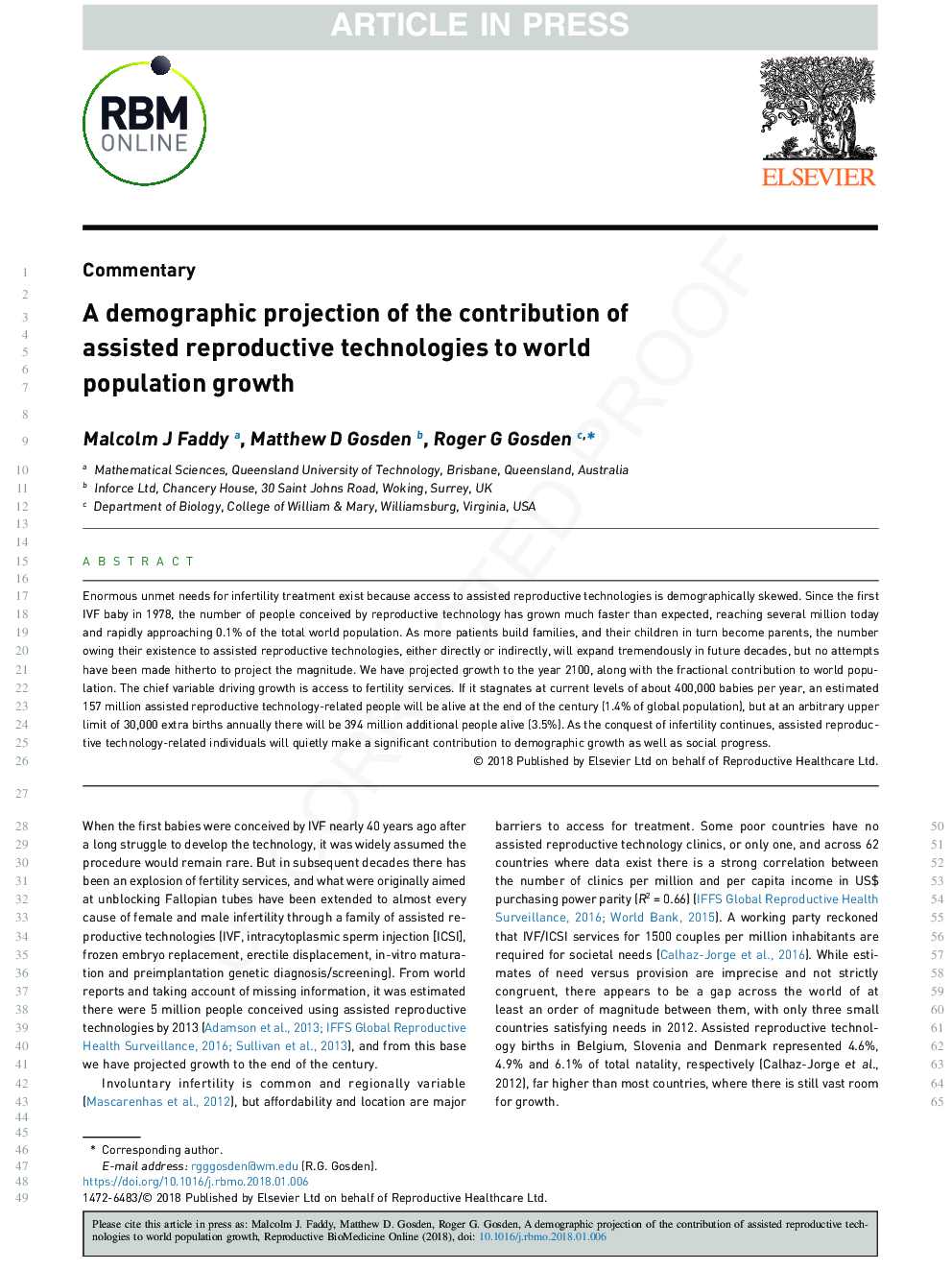| کد مقاله | کد نشریه | سال انتشار | مقاله انگلیسی | نسخه تمام متن |
|---|---|---|---|---|
| 8783880 | 1600901 | 2018 | 4 صفحه PDF | دانلود رایگان |
عنوان انگلیسی مقاله ISI
A demographic projection of the contribution of assisted reproductive technologies to world population growth
ترجمه فارسی عنوان
یک طرح جمعیت شناختی از سهم تکنولوژی های کمک باروری به رشد جمعیت جهان
دانلود مقاله + سفارش ترجمه
دانلود مقاله ISI انگلیسی
رایگان برای ایرانیان
کلمات کلیدی
موضوعات مرتبط
علوم پزشکی و سلامت
پزشکی و دندانپزشکی
زنان، زایمان و بهداشت زنان
چکیده انگلیسی
Enormous unmet needs for infertility treatment exist because access to assisted reproductive technologies is demographically skewed. Since the first IVF baby in 1978, the number of people conceived by reproductive technology has grown much faster than expected, reaching several million today and rapidly approaching 0.1% of the total world population. As more patients build families, and their children in turn become parents, the number owing their existence to assisted reproductive technologies, either directly or indirectly, will expand tremendously in future decades, but no attempts have been made hitherto to project the magnitude. We have projected growth to the year 2100, along with the fractional contribution to world population. The chief variable driving growth is access to fertility services. If it stagnates at current levels of about 400,000 babies per year, an estimated 157 million people alive at the end of the century will owe their lives to assisted reproductive technologies (1.4% of global population), but at an arbitrary upper limit of 30,000 extra births annually there will be 394 million additional people alive (3.5%). As the conquest of infertility continues, individuals who owe their lives to assisted reproductive technologies will quietly make a significant contribution to demographic growth as well as social progress.
ناشر
Database: Elsevier - ScienceDirect (ساینس دایرکت)
Journal: Reproductive BioMedicine Online - Volume 36, Issue 4, April 2018, Pages 455-458
Journal: Reproductive BioMedicine Online - Volume 36, Issue 4, April 2018, Pages 455-458
نویسندگان
Malcolm J. Faddy, Matthew D. Gosden, Roger G. Gosden,
